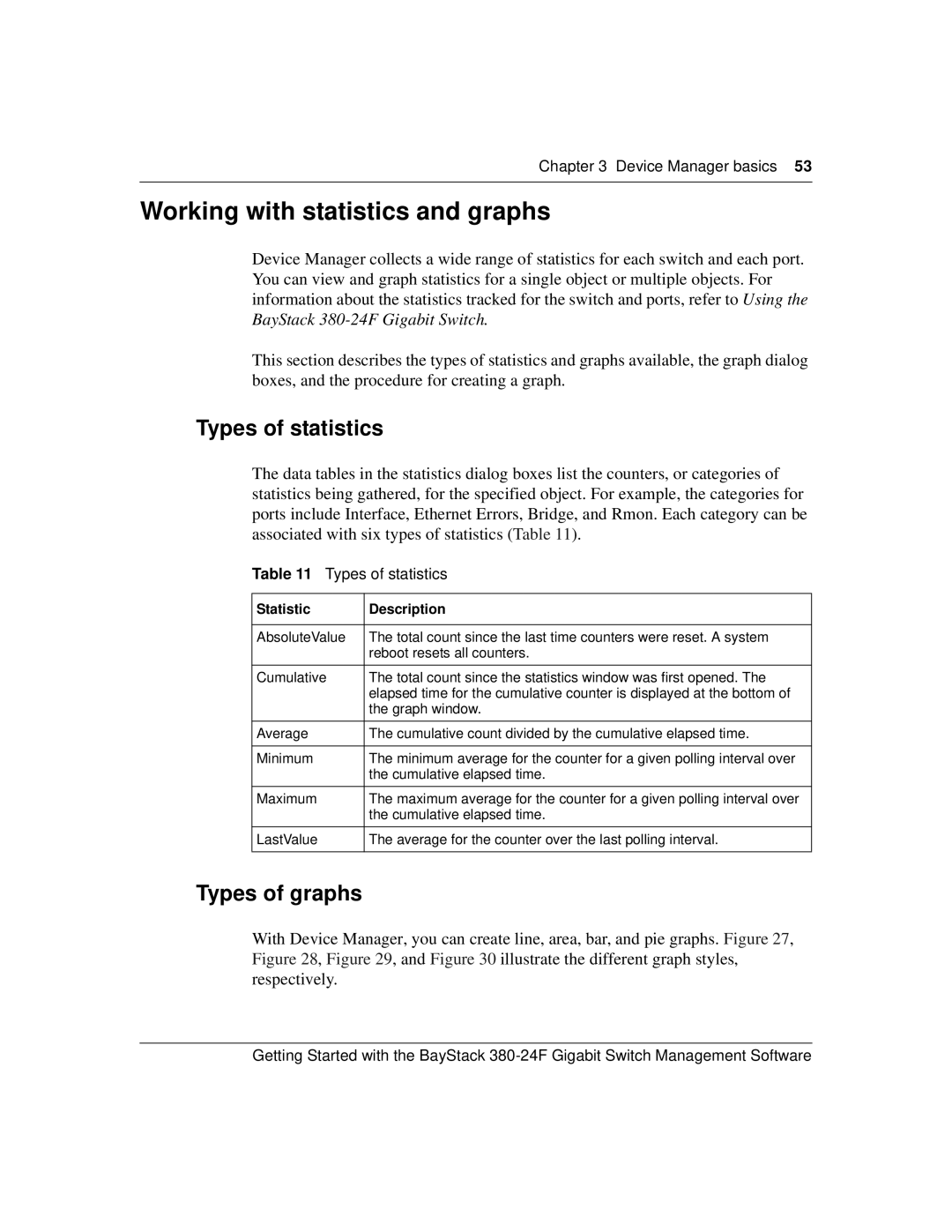
Chapter 3 Device Manager basics 53
Working with statistics and graphs
Device Manager collects a wide range of statistics for each switch and each port. You can view and graph statistics for a single object or multiple objects. For information about the statistics tracked for the switch and ports, refer to Using the BayStack
This section describes the types of statistics and graphs available, the graph dialog boxes, and the procedure for creating a graph.
Types of statistics
The data tables in the statistics dialog boxes list the counters, or categories of statistics being gathered, for the specified object. For example, the categories for ports include Interface, Ethernet Errors, Bridge, and Rmon. Each category can be associated with six types of statistics (Table 11).
Table 11 Types of statistics
Statistic | Description |
|
|
AbsoluteValue | The total count since the last time counters were reset. A system |
| reboot resets all counters. |
|
|
Cumulative | The total count since the statistics window was first opened. The |
| elapsed time for the cumulative counter is displayed at the bottom of |
| the graph window. |
|
|
Average | The cumulative count divided by the cumulative elapsed time. |
|
|
Minimum | The minimum average for the counter for a given polling interval over |
| the cumulative elapsed time. |
|
|
Maximum | The maximum average for the counter for a given polling interval over |
| the cumulative elapsed time. |
|
|
LastValue | The average for the counter over the last polling interval. |
|
|
Types of graphs
With Device Manager, you can create line, area, bar, and pie graphs. Figure 27, Figure 28, Figure 29, and Figure 30 illustrate the different graph styles, respectively.
Getting Started with the BayStack
